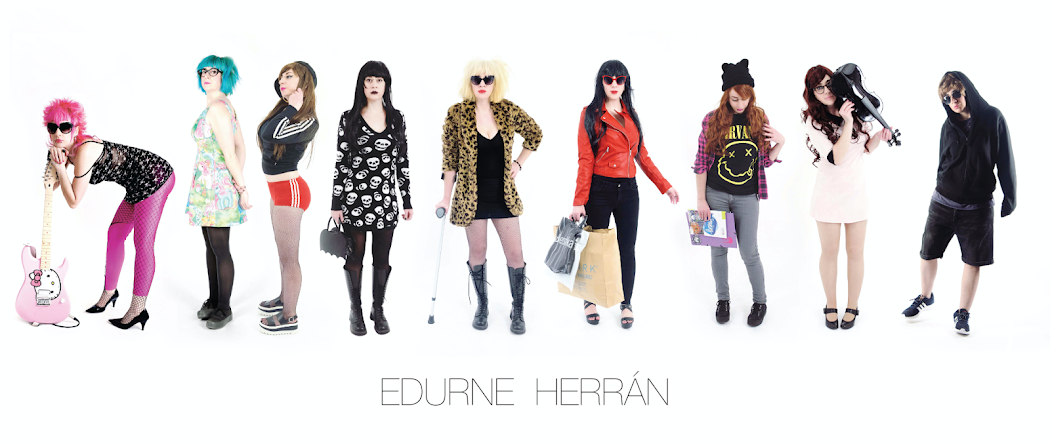Pic by Sarah Maria Schmidt / @harasanas
[EN]
The idea to this work came up when Edurne Herrán thought about a possible loss of all her digital files and asked herself: “How can I measure the intangible?”
The goal of the installation is to take the virtual to the physical level, making the intangible tangible. Nothing we created in the virtual world is trivial: our tools have been copied and digitally reproduced. Technologies help us carry out everyday tasks, and while some argue that technology has made our lives more complex, we can see how it has changed our world, un-cluttering our desks and simplifying our lives.
The main idea is to explore the physicality of digital files and their arrangement in physical (public) space in order to make the personal visible and see how it affects environment and audience. With 3D Desktop Edurne Herrán has recreated her computer desktop environment in the real world so that the audience can dive into it, not by clicking but using their bodies. This work functions as an intervention in public space and a metaphor for the information we share virtually.
2021 / FMR21 Linz, Austria
[ES]
La idea de este trabajo surgió cuando Edurne Herrán pensó en una posible pérdida de todos sus archivos digitales y se preguntó: “¿Cómo puedo medir lo intangible?”.
El objetivo de la instalación es llevar lo virtual al nivel físico, haciendo tangible lo intangible. Nada de lo que hemos creado en el mundo virtual es trivial: nuestras herramientas se han copiado y reproducido digitalmente. Las tecnologías nos ayudan a realizar las tareas diarias y, aunque algunos argumentan que la tecnología ha hecho nuestras vidas más complejas, podemos ver cómo ha cambiado nuestro mundo, despejando nuestros escritorios y simplificando nuestras vidas.
La idea principal es explorar la fisicalidad de los archivos digitales y su disposición en el espacio físico (público) para hacer visible lo personal y ver cómo afecta al entorno y por ende a la audiencia. Con 3D Desktop, Edurne Herrán ha recreado en el mundo real el entorno del escritorio de su computadora para que el público pueda sumergirse en él, no haciendo clic sino usando sus cuerpos para moverse en el espacio y tocar los archivos. Esta obra funciona como una metáfora de la información que compartimos virtualmente, así como la vigilancia constante a la que nos vemos sometidos.
2021 / FMR21 Linz, Austria
[DE]
Die Idee zu dieser Arbeit entstand, als Edurne Herrán über den Verlust all ihrer digitalen Dateien nachdachte und sich fragte: “Wie kann ich das Ungreifbare messen?”
Ziel der Installation ist es, das Virtuelle auf die physische Ebene zu bringen und das Immaterielle greifbar zu machen. Nichts, was wir in der virtuellen Welt geschaffen haben, ist trivial: unsere Werkzeuge wurden kopiert und digital vervielfältigt, Technologie hilft uns, alltägliche Aufgaben zu erledigen. Während Einige argumentieren, dass unser Leben komplizierter geworden ist, sehen wir wie das Digitale unsere Welt verändert, unsere Schreibtische entrümpelt und unser Leben vereinfacht hat.
Die Hauptidee dieser Arbeit ist es, die Körperlichkeit digitaler Dateien und ihre Anordnung im physischen (öffentlichen) Raum zu erforschen, um das Persönliche sichtbar zu machen und zu zeigen, wie es sich auf die Umgebung und das Publikum auswirkt. Edurne Herrán hat mit 3D Desktop ihre persönliche Computer-Umgebung in der realen Welt nachgebaut, so dass das Publikum in sie eintauchen kann, nicht durch Klicken, sondern mit dem ganzen Körper. Die Arbeit fungiert als Intervention im öffentlichen Raum, als Metapher für die Informationen, die wir auf virtuellem Weg teilen.
2021 / FMR21 Linz, Österreich
Pic by Sarah Maria Schmidt / @harasanas
The second edition of the festival, FMR 21, is curated and organized by the artist collective qujOchÖ, the net culture initiative servus.at, Atelierhaus Salzamt of the City of Linz, Department of Media Theories at University of Art and Design Linz and Sturm und Drang Galerie.
Press:


